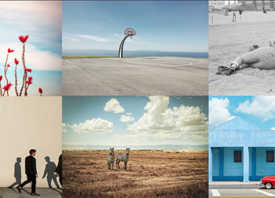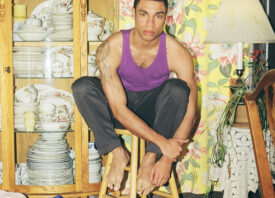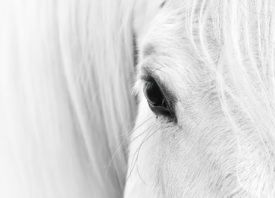Search this site
Instagram Star Tim Landis on the Secrets of His Success

Amboseli National Park, Kenya

Chennai, India
Before he was a jet-setting photographer, Tim Landis was a curious medical supply delivery man with a passion for beautiful places. He hopped on Instagram about a month after it was released, and he became one of the app’s first major players. His sun-drenched scenes and tales of wanderlust and adventure went viral all over the web and all over the world. Today, he has well over 625 thousand followers on Instagram and has helped leading brands, organizations, and tourist boards connect with people by telling real stories that matter to real people.
Since then, Landis has ridden in hot air balloons over Turkey, approached herds of elk in the Ozarks of Arkansas, and seen the zebras, wildebeest, and elephants in Amboseli National Park. He’s told the manifold tales of the people of India’s cities and shared the stories of children in Kenya. He’s also signed on to become a mentor at RookieUp, a new online service where you can schedule 1-on-1 video mentor sessions with some of the industry’s most innovative minds. When he was just starting out, Landis didn’t have someone to show him the ropes. Now, he’s hoping to change that for emerging photographers around the world.
We spoke with the photographer about his pictures, his Instagram stardom, and his choice to give back to aspiring artists.

Dead Sea, Israel
What do you think it was about your iPhone photography that took off so quickly? What do your pictures have that no other Instagram pictures have?
“I think it was simple. When I started, iPhone photography was relatively new, and folks were stunned at what a phone could do in the photographic sphere. I also live in a very interesting place, near the beautiful Lake Superior. I don’t necessarily think my photos are much different from others. I think what separates one photo from another is the very essence of interacting with your environment in a personal, meaningful way. I think that comes through in a photo. The iPhone is a tool, and knowing how to use that tool helps too.”
You describe yourself as both a photographer and an influencer. What does it mean to you to be a social media influencer?
“I would like to think that my work has an influence on the people who view it. That can go both ways, positive or negative, but I truly hope that my influence is a positive one. I also believe all of our work is inspired or influenced by someone we admire. So when I describe myself as an influencer, I would hope I have an impact on others.”

Kolkata, India
What’s your favorite place you’ve traveled to so far? What made it so wonderful for photography?
“That’s a tough question to answer because I view every place I go to as its own singular experience. I love all the places I’ve been, but if you’re going to make me choose, I love Turkey. It’s one of those places that just grabs you. The people and landscapes are so vast and dynamic. The culture is vibrant, and photographically, it is a playground.”
Has your 600K+ following on Instagram influenced the course of your work at all? In other words, how has your audience helped guide your creative vision?
“Instagram has definitely influenced my creative vision. Early on, it was more of an organic feedback, which I loved. It could be a good gauge of whether your work is any good or not. I think all that has changed. Instagram can be a curse to a creative vision. What I mean by that is that we can get sucked into a creative vision that ‘works’ on Instagram. With that thinking comes this constant battle about whether to create for that feedback or to create for whatever it was that made you fell in love with photography in the first place. I truly feel like creating for Instagram can leave you feeling pretty empty at the end of the day.”
What’s the most viral photo you’ve made so far, and why do you think it was so popular?
“My true most viral photo is probably one of my hot air balloon shots from above Kapadokya, Turkey. I believe that was all to do with it looking like something from another planet. Maybe people haven’t seen many photos from that location yet?”

Cappadocia, Turkey
When you work with brands, how much creative control do you typically have? How do you reconcile your personal vision with theirs in a way that is meaningful for both of you?
“It varies, but most of the time, it’s a good match creatively. That’s why the brand is pursuing you or you’re pursuing a brand. There is definitely a lot of give and take at times. I think creative control is reconciled in that there is always an end goal. I believe versatility is super beneficial. The reality is you won’t always be proud of every project, but that should always be what you strive for in the process.”
You’re mostly self-taught. What’s the most important lesson you learned along the way? Do you think you would have learned this lesson in a more traditional educational setting?
“Yes! I think it’s being true to yourself. Creatively, what do I feel inside? Am I creating work that really gets me excited? Do I feel alive when I’m photographing? Am I passionate about this? Do I feel like I am gifted and this is what I’m supposed to do? All questions that I continually ask myself. I think if I had started with a more traditional education, it would have been more focused on the technical side. Don’t get me wrong, that can be and is super beneficial to learn, but it also would have taken the life out of it all for me. I started because I was drawn to it.”

Amboseli National Park, Kenya
Did you have a mentor in the early days of your career?
“Honestly, I don’t think I had one single mentor. If there was anyone who was that role, it would have to be my wife. She was a gigantic source of encouragement many times when I just wanted to quit. She was truthful and honest with me. We are our own worst critics, and most times, it takes outward encouragements to tell us where we truly stand.”
Is there anything you wish someone had told you when you were just starting out?
“Always stay true to your own creative vision. Also, I could have used a lot of corrective criticism on my work. The further you get into your career, the harder it is to take. Also, develop many, many layers of skin. There’s always going to be someone who hates on what you do.”

Kenyan boy in front of a looming Mt Kilimanjaro
What does being a mentor mean to you? What do you most look forward to about taking on this role?
“It means a lot to me! It’s rare these days that anyone wants to give back creatively. Everyone is looking for an edge. No one wants to share that. So for me, the opportunity to be able to have one arm reaching ahead to learn from others and one arm reaching back to help others is a wonderful place to be.”

Old Howrah Bridge, India
Why is it important for emerging photographers to have mentors?
“I think it’s super important because we can tend to feel lost in this extremely chaotic field. Most of the time, in a busy place, you feel alone. To have someone help navigate through that is crucial. Not only that, but to be able to have someone speak truth into your life and lend some encouragement is huge. I just want to provide for these emerging photographers what I didn’t have and to help put them in the best position to succeed.”
Visit RookieUp and get started with a mentor like Tim Landis, Heath Brockwell, or Maria Jose Govea, here. You can also follow RookieUp on Twitter and Facebook.
All images © Tim Landis


